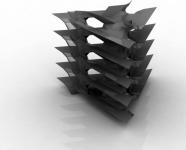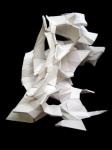Am:Pm {AADRL 2006~2008} {Jinqi Huang, Junkai Jian, Lina Ahmad} proposed to redefine ‘urbanism’ as a series of cellular space subdivisions and transitions. Like all the ancient and historical cities that emerged from their own spatial ordered qualities, and geometrical distributive hierarchies, am:Pm proposes a networked urbanism configured from cellular volumes, initially starting as a thick multiplicitous urban ground strata for the World’s Fair Expo 2010.
The landscape is interconnected with interior and exterior public spaces as well as cultural facilities and domestic spaces. Networking lines act as infrastructural connections between the distributed spatial pockets. Cellular organizations morphs from conventional aggregate spaces to extreme transformed ones, gradually transforming into an open space.
Extreme moments of transformations act as experimental pavilions that transform into radical landscapes and public spaces, and therefore enduring the legacy of the expo, whereas private spaces maintain their conventional appearance and homogenous transformation.
On both urban, building scale and material level, the cellular network organization acts as ground strata and spatial pockets organization, as well as porous occupiable sections, all seeking a coherent yet different oriented urban order, that spans across the two river banks into the two sides of the city, and thus over time influencing its formation. It is an order that has the capacity to organize differential interactivity, sectional movements, as well as diversity of scales, densities, heights, and programmatic mixities.
The Expo 2010 landscape will start to be generated across both sides of the river banks, and the networked system of spatial cellular organizations and connections is proposed to extend and intensify across the site in the period intervals that follows, producing highly dense sliver organizations providing a horizontal view to the few emerged vertical organizations.
Parametric Design Systems:
A scripted 3d networking system of line segments is deployed at the site scale, coded with specific rules of growth and expansion configured from straight line segments, to provide gradual spatial transitions and subdivisions. Specific behaviors are assigned to transitional arrays of curved surface module and created within the guidelines of a bounding network, and thus transforming the conventional cube into curved surface modules, which is further applies at different scales expressing interaction and achieving forms of notational complexity that result from simple local order and behavior.
2006
2008
Cellular Network City by Jinqi Huang in China won the WA Award Cycle 2. Please find below the WA Award poster for this project.
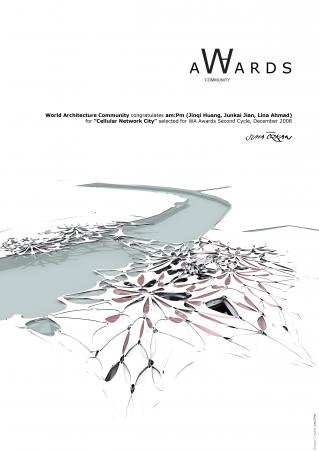
Downloaded 227 times.
Favorited 3 times
.jpg)

.jpg)
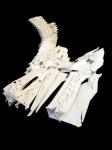
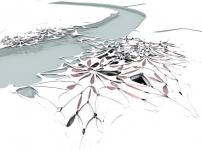
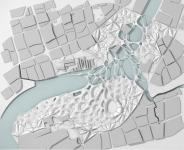

.jpg)
